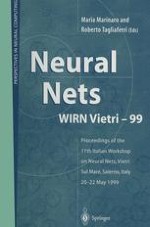From its early beginnings in the fifties and sixties, the field of neural networks has been steadily developing to become one of the most interdisciplinary areas of research within computer science. This volume contains a selection of papers from WIRN Vietri-99, the 11th Italian Workshop on Neural Nets. This annual event, sponsored, amongst others, by the IEEE Neural Networks Council and the INNS/SIG Italy, brings together the best of research from all over the world. The papers cover a range of topics within neural networks, including pattern recognition, signal and image processing, mathematical models, neuro-fuzzy models and economics applications.
